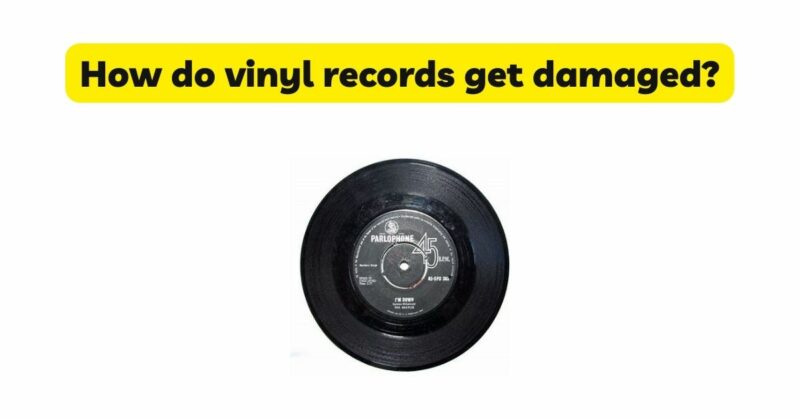Vinyl records have enjoyed a resurgence in popularity in recent years, captivating music enthusiasts with their unique analog sound and tangible charm. However, as cherished as they are, vinyl records are not invincible. They can be susceptible to various types of damage that can impact their sound quality and overall condition. In this article, we will explore the common culprits behind vinyl record damage and provide valuable tips on how to prevent it, allowing you to preserve your cherished collection for generations to come.
Scratches: One of the most common and detrimental types of damage to vinyl records is scratches. Scratches can occur due to mishandling, improper cleaning techniques, or contact with sharp objects. Even minor scratches can cause audible pops, clicks, and distortion during playback. Proper handling and cleaning methods, along with using inner and outer protective sleeves, can significantly reduce the risk of scratches.
Dust and Dirt: Dust and dirt particles are the arch-nemesis of vinyl records. When records are exposed to a dusty environment or not adequately cleaned before playback, the particles settle into the grooves, leading to distortion and degradation of sound quality. Regular cleaning with a carbon fiber brush or record cleaning solution can help keep your records free from dust and dirt.
Warping: Vinyl records are sensitive to temperature fluctuations. Exposure to excessive heat or direct sunlight can cause the vinyl to warp, resulting in an uneven surface that affects playback. Similarly, cold temperatures can make the vinyl brittle and prone to cracks. Proper storage in a temperature-controlled environment is essential to prevent warping.
Groove Damage: The grooves on vinyl records carry the audio information, and any damage to these grooves can result in compromised sound quality. Heavy-handed handling, dropping records, or using improper cleaning techniques can lead to groove damage. Handle records by their edges and use gentle cleaning methods to preserve the integrity of the grooves.
Ring Wear: Ring wear refers to the wear and tear that occurs on the outer edges of the record’s jacket due to friction with other records during storage. Overcrowding and tight packing of records can lead to ring wear. Storing records upright and using dividers between them can help prevent this type of damage.
Mold and Mildew: If vinyl records are stored in a damp or humid environment, they can be vulnerable to mold and mildew growth. Mold and mildew can cause permanent damage to the record surface and even spread to the record sleeves. Ensure proper ventilation and maintain a dry storage area to prevent mold and mildew formation.
Misaligned Turntable: A misaligned turntable can cause unnecessary wear and tear on records. Ensure that your turntable is correctly calibrated, with the tracking force, anti-skate, and alignment properly adjusted according to the manufacturer’s instructions. An improperly aligned stylus or excessive tracking force can damage the record grooves.
Exposure to Magnetic Fields: Vinyl records are sensitive to magnetic fields, which can impact the audio quality. Keep records away from strong magnets or electronic devices that emit magnetic fields, as they can distort the sound and cause undesirable artifacts during playback.
Improper Storage: Improper storage can significantly contribute to vinyl record damage. Stacking records horizontally or storing them in a slanted position can cause warping and deformation over time. Invest in proper record storage solutions, such as vinyl record shelves or boxes, to maintain the records’ condition.
Mishandling During Shipping: When shipping vinyl records, they are at risk of damage if not adequately protected. Mishandling during shipping can lead to shattered record jackets, cracked vinyl, and other forms of damage. Use sturdy cardboard boxes, bubble wrap, and packing peanuts to secure the records and protect them from impact.
Conclusion: Vinyl records are delicate artifacts that require diligent care to preserve their sound quality and longevity. By understanding the various culprits behind vinyl record damage, including scratches, dust, warping, groove damage, ring wear, mold, misaligned turntables, exposure to magnetic fields, improper storage, and mishandling during shipping, you can take proactive measures to prevent such damage. Through proper handling, cleaning, storage, and shipping practices, you can ensure that your vinyl record collection remains in pristine condition, allowing you to enjoy the unparalleled joy of analog music for years to come.


